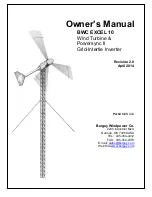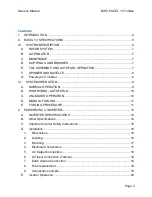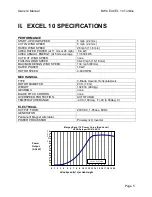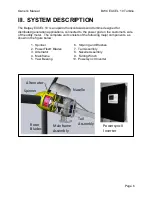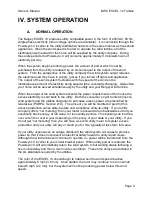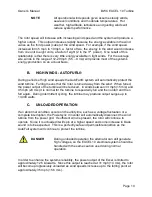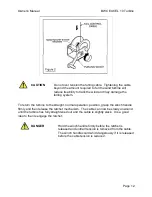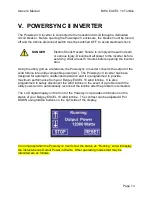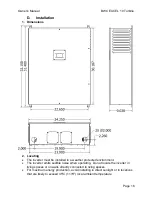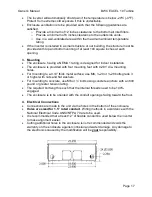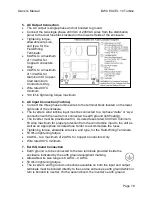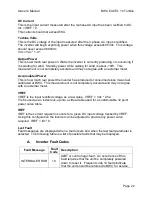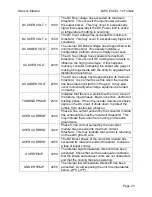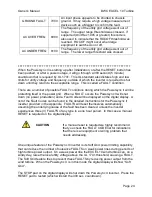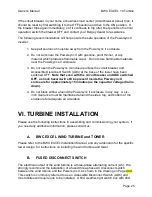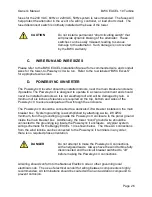
Owner’s Manual
BWC EXCEL 10 Turbine
Page 11
D.
MANUAL FURLING
The Bergey EXCEL 10 is designed for unattended operation over an extended period of
time. Exceptional situations may occur, however, in which the wind turbine should be
manually furled. These situations include:
1. EXCESSIVE VIBRATION -
Uneven ice build-up, ice shedding, or blade damage may cause
the wind turbine to experience excessive vibration. Always furl the turbine as soon as an
increase in vibration is detected. Any new or excessive vibration in the turbine when ice is
not present should be investigated immediately.
2. UNUSUAL SOUND -
If the turbine begins making clinking, growling, or other unusual sound it
should be furled and fully inspected as soon as possible.
3. INSPECTION AND MAINTENANCE -
Whenever someone has to climb the tower the wind
turbine must be manually furled, and the alternator dynamically braked (ie. electrically
shorted), even if the wind speed is very low.
Manual furling of the EXCEL 10 is accomplished by operating the furling winch located
at the base of the tower. The winch cable is connected to the tail boom such that as the
cable is tightened the tail “folds” and the rotor is pulled away form the wind. Furling the
wind turbine will not stop the rotor completely and it may take some time for the rotor to
be pulled around away from the wind. Fully furled the rotor will still be partly facing into
the wind and will normally turn at a reduced rate. The rotor can only be brought to a
complete stop by shorting the output leads of the turbine.
DANGER
Do not attempt to furl the wind turbine or approach any
part of the tower when there is lightning in the area.
E.
FURLING PROCEDURE
The furling winch is located at the base of the wind turbine tower. To furl the wind
turbine, first make sure that the winch ratchet is engaged (a strong clicking sound
should be heard as the handle is turned). The winch handle may then be turned until
the tail comes to rest against its rubber stop. When the stop is reached the tail will stop
rotating towards the blades and the force required to turn the handle will greatly
increase. When fully furled, the tail will have come around approximately 70 degrees:
it
does not come around parallel to the blades.
The turbine may not come out of the wind immediately because the rotor forces will
sometimes resist the sideways force acting of the tail. This situation will correct itself
after a short time.

